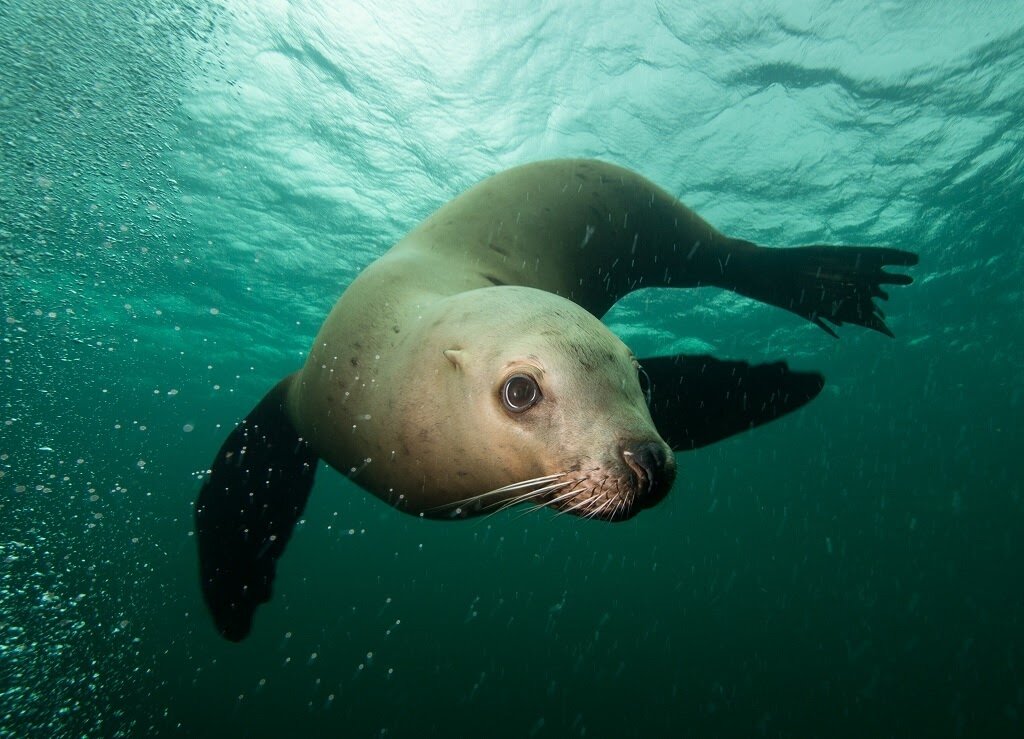Steller Sea Lion Facts
Photo by Alison Engle. Banner photo by Alexander Patia.
Steller sea lions (Eumetopias jubatus) can be found along the North American coast, ranging from southeastern Alaska to central California, and all the way to eastern Russia. They hunt for prey in the water and frequently haul-out to rest on islands with rocky shorelines, beaches, and docks. During the summer months, they congregate at rookeries or breeding grounds where they breed, give birth, and nurse their pups. In Alaska, it was found that females return to the rookery where they were born in order to breed.
DID YOU KNOW?
Their preferred prey in Washington state is fish such as Pacific hake, rockfish, skates, flounders, herring, salmon, smelt, shad, and cod.
Steller sea lions are the world’s largest species of sea lions. The adult male Steller sea lion can weigh up to 2,400 pounds and will grow to be 3 times the size of an adult male grizzly bear.
Steller sea lions communicate with one another by hissing and belching. The bulls, or adult males, are usually responsible for the loud noises, which are meant to ward off other males during mating season. They also communicate underwater, using clicks, barks, and low-frequency pulses.
The main predators of Steller sea lions are Transient, or Bigg’s killer whales, Pacific sleeper sharks, and historically, humans.
In 1979, the Steller sea lion population was at an estimated number of 18,313 animals. In 1990, they were federally listed as a threatened species. This listing, in addition to the protection afforded by the Marine Mammal Protection Act of 1972, has increased their population to more than 70,000 animals.
The eastern distinct population segment, which includes Steller sea lions originating from rookeries east of Cape Suckling in Alaska, has since recovered and as of 2013 was no longer listed federally and in 2015 no longer listed in Washington State—a significant achievement under the Endangered Species Act. The western distinct population segment (DPS) remains endangered.
Photo by Jennifer Vanderhoof.



